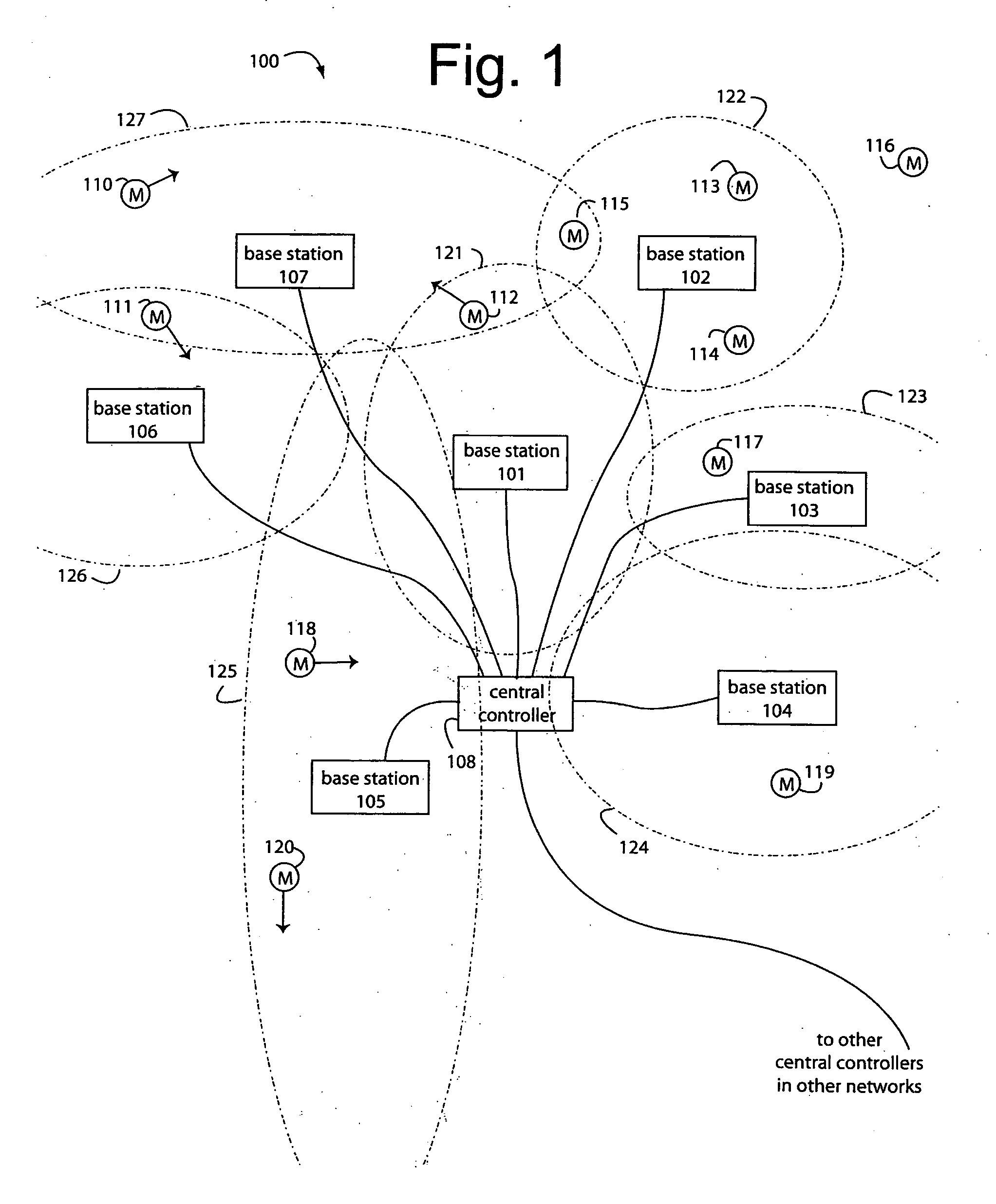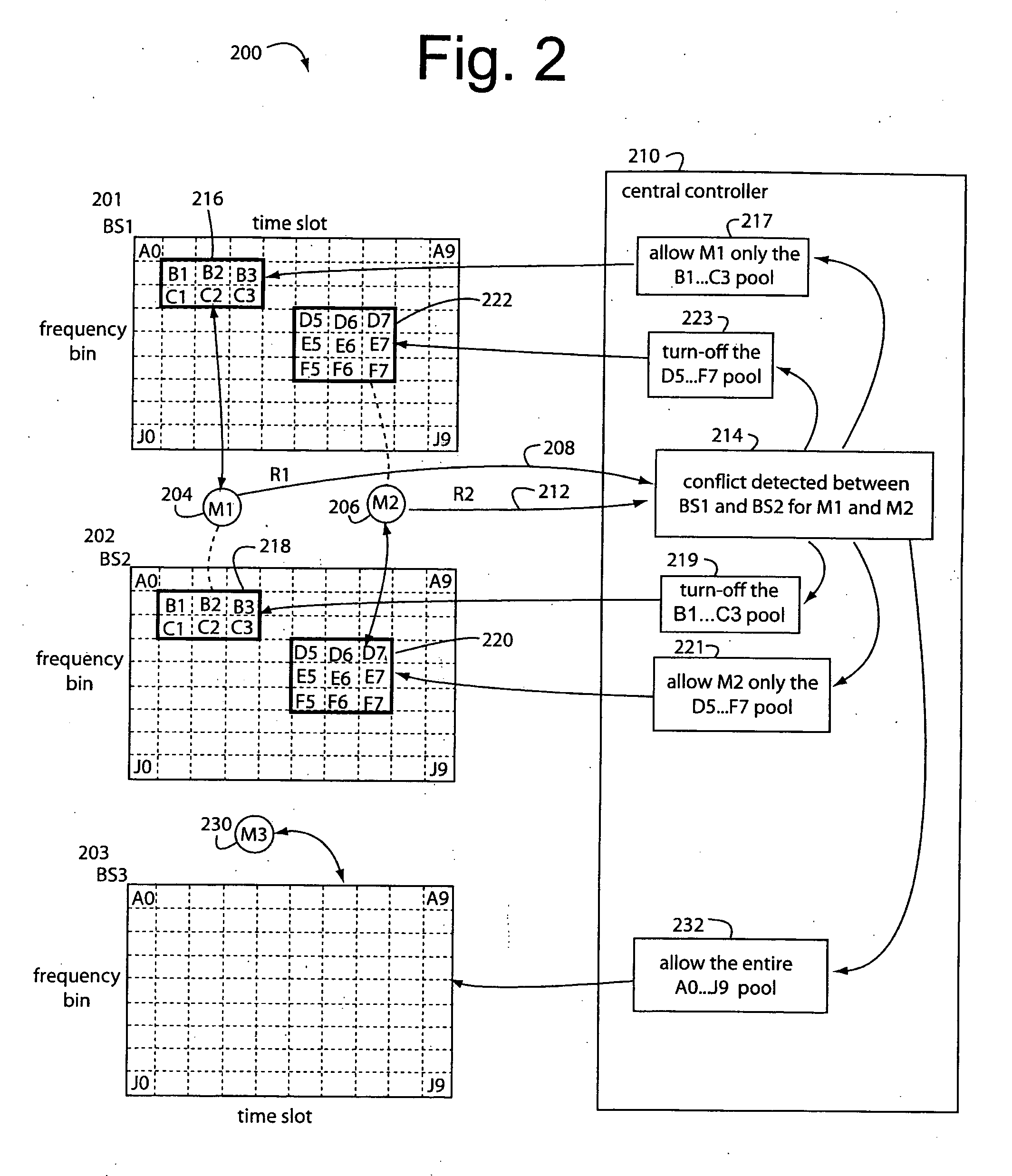Real-time spectrum management to increase frequency reuse
a frequency reuse and real-time technology, applied in wireless communication services, electrical equipment, wireless commuication services, etc., can solve the problems of inability to communicate, too many users and too few channels, and become impossible to avoid, so as to optimize traffic capacity system-wide, the effect of eliminating co-channel interferen
- Summary
- Abstract
- Description
- Claims
- Application Information
AI Technical Summary
Benefits of technology
Problems solved by technology
Method used
Image
Examples
Embodiment Construction
[0029]FIG. 1 represents a wireless network system embodiment of the present invention, and is referred to herein by the general reference numeral 100. The wireless network system 100 connects together a number of neighboring base-stations 101-107 to a central controller 108. Remote, subscriber terminal, mobile, and other types of user devices (“mobile user device”) 110-120 can be placed in, or move about into and out of, the wireless service areas 121-127 of the base-stations 101-107. Each mobile user device 110-120 periodically reports to the central controller 108 the signal strength it observes for the respective base-stations. The reports are communicated by any base-station 101-107 able to transfer such data. In the case of mobile user device 116, such report is not possible because it's outside service areas 121-127.
[0030]FIG. 1 plots a two-dimensional space. The mobile user devices are shown with vectors representing their relative roaming directions and speeds. The base-sta...
PUM
 Login to View More
Login to View More Abstract
Description
Claims
Application Information
 Login to View More
Login to View More - R&D
- Intellectual Property
- Life Sciences
- Materials
- Tech Scout
- Unparalleled Data Quality
- Higher Quality Content
- 60% Fewer Hallucinations
Browse by: Latest US Patents, China's latest patents, Technical Efficacy Thesaurus, Application Domain, Technology Topic, Popular Technical Reports.
© 2025 PatSnap. All rights reserved.Legal|Privacy policy|Modern Slavery Act Transparency Statement|Sitemap|About US| Contact US: help@patsnap.com



